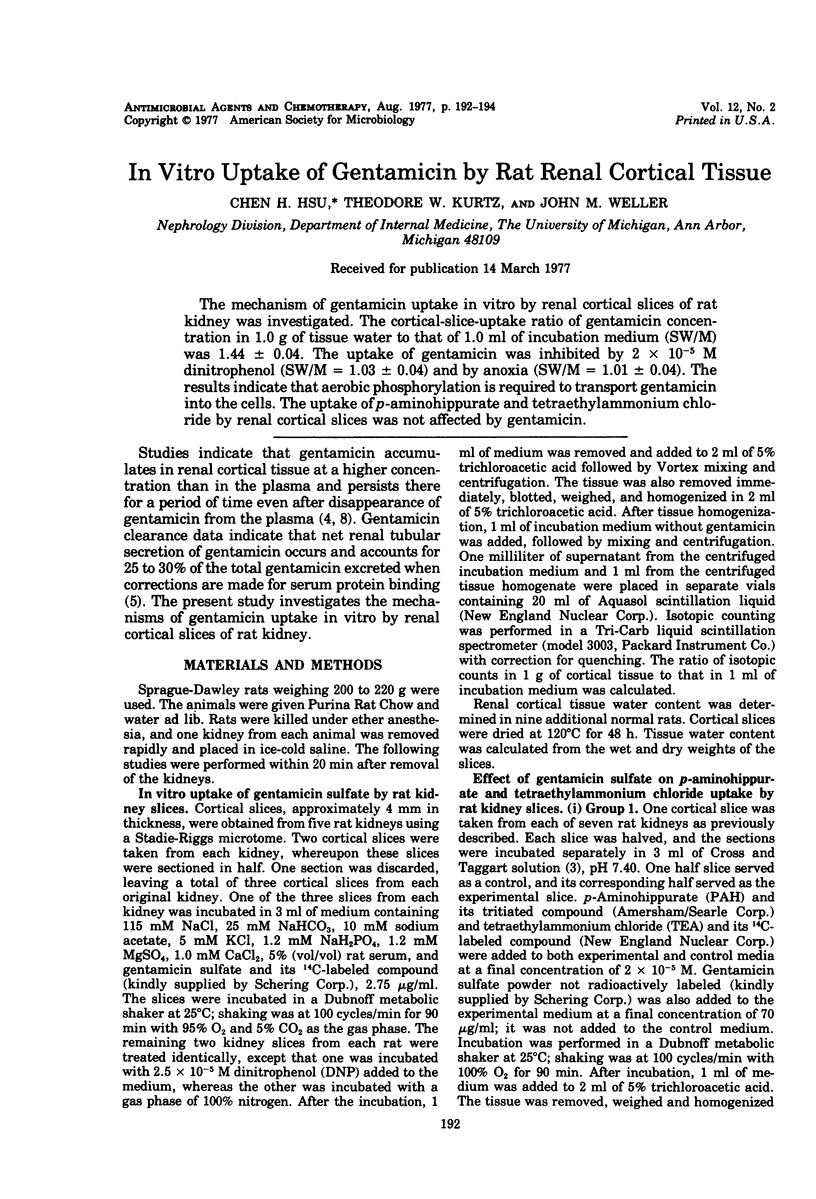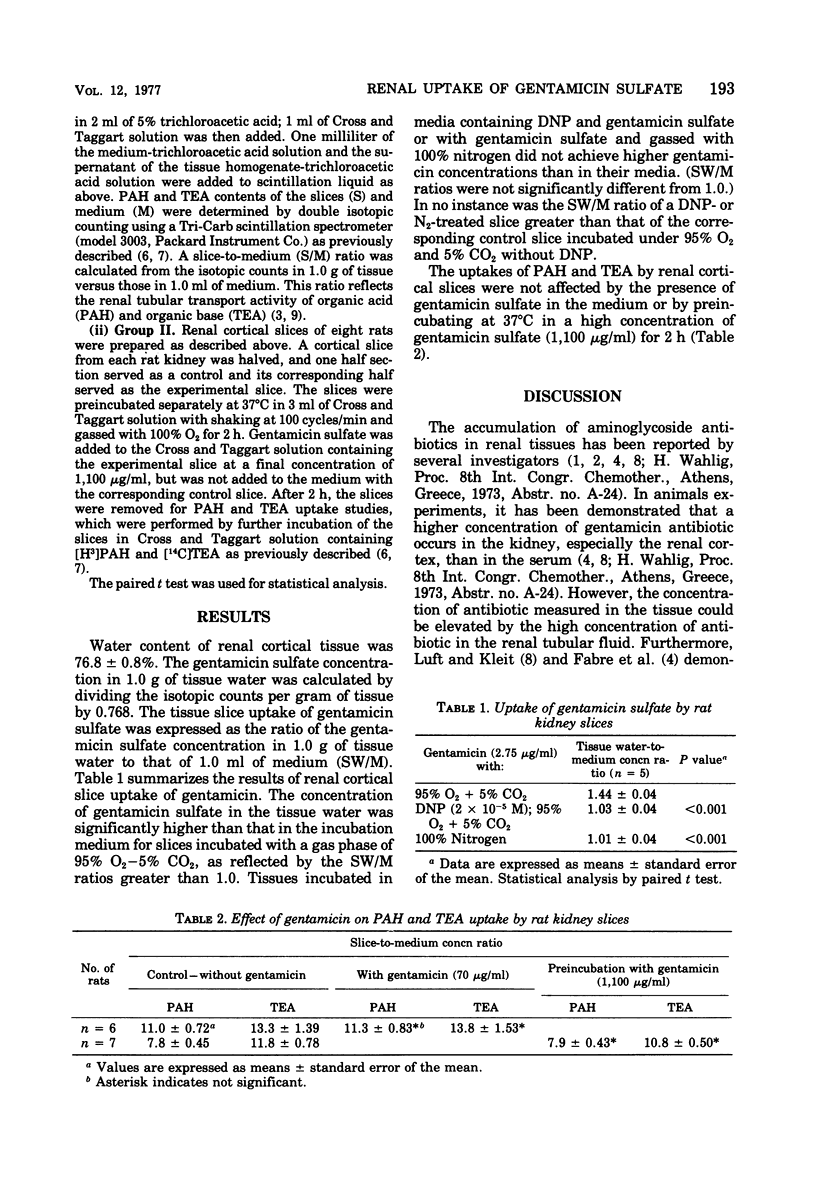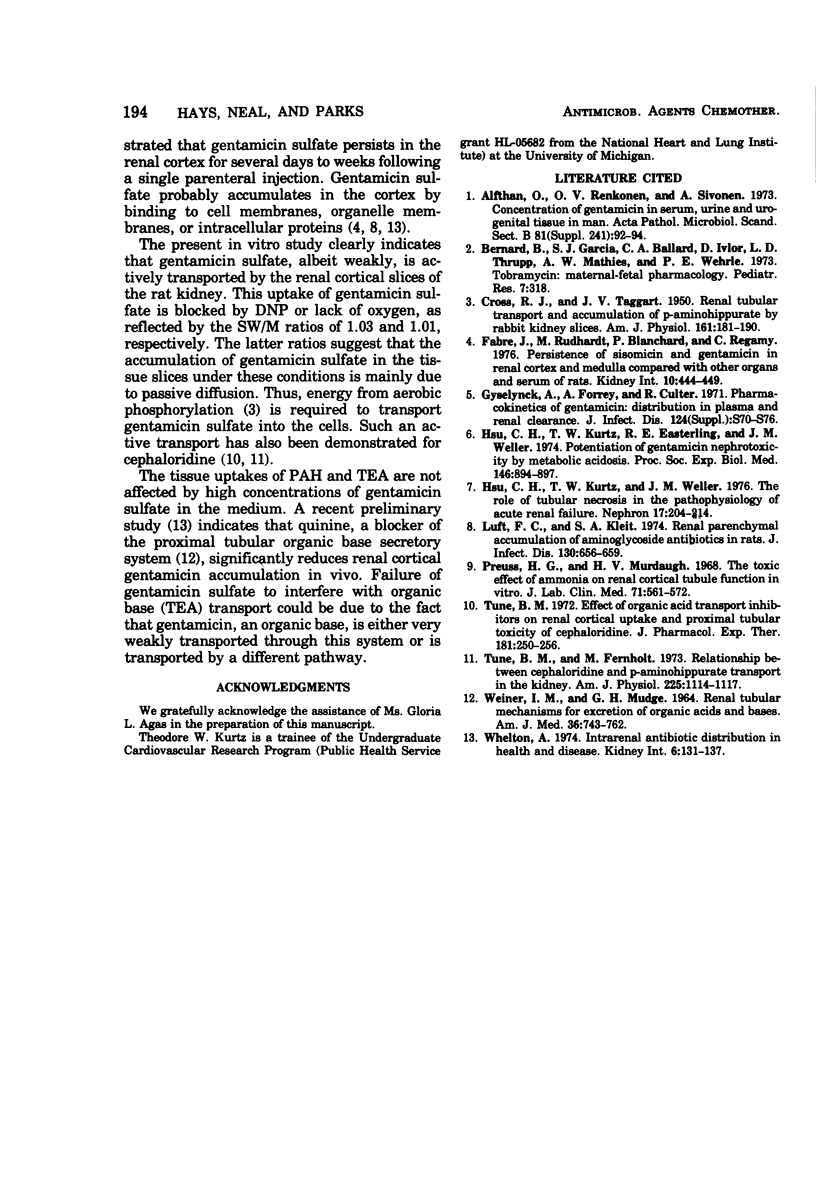Abstract
The mechanism of gentamicin uptake in vitro by renal cortical slices of rat kidney was investigated. The cortical-slice-uptake ratio of gentamicin concentration in 1.0 g of tissue water to that of 1.0 ml of incubation medium (SW/M) was 1.44 ± 0.04. The uptake of gentamicin was inhibited by 2 × 10−5 M dinitrophenol (SW/M = 1.03 ± 0.04) and by anoxia (SW/M = 1.01 ± 0.04). The results indicate that aerobic phosphorylation is required to transport gentamicin into the cells. The uptake of p-aminohippurate and tetraethylammonium chloride by renal cortical slices was not affected by gentamicin.
Full text
PDF


Selected References
These references are in PubMed. This may not be the complete list of references from this article.
- CROSS R. J., TAGGART J. V. Renal tubular transport: accumulation of p-aminohippurate by rabbit kidney slices. Am J Physiol. 1950 Apr 1;161(1):181–190. doi: 10.1152/ajplegacy.1950.161.1.181. [DOI] [PubMed] [Google Scholar]
- Fabre J., Rudhardt M., Blanchard P., Regamey C. Persistence of sisomicin and gentamicin in renal cortex and medulla compared with other organs and serum of rats. Kidney Int. 1976 Dec;10(6):444–449. doi: 10.1038/ki.1976.131. [DOI] [PubMed] [Google Scholar]
- Gyselynck A. M., Forrey A., Cutler R. Pharmacokinetics of gentamicin: distribution and plasma and renal clearance. J Infect Dis. 1971 Dec;124 (Suppl):S70–S76. doi: 10.1093/infdis/124.supplement_1.s70. [DOI] [PubMed] [Google Scholar]
- Hsu C. H., Kurtz T. W., Easterling R. E., Weller J. M. Potentiation of gentamicin nephrotoxicity by metabolic acidosis. Proc Soc Exp Biol Med. 1974 Jul;146(3):894–897. doi: 10.3181/00379727-146-38213. [DOI] [PubMed] [Google Scholar]
- Hsu C. H., Kurtz T. W., Weller J. M. The role of tubular necrosis in the pathophysiology of acute renal failure. Nephron. 1976;17(3):204–214. doi: 10.1159/000180724. [DOI] [PubMed] [Google Scholar]
- Luft F. C., Kleit S. A. Renal parenchymal accumulation of aminoglycoside antibiotics in rats. J Infect Dis. 1974 Dec;130(6):656–659. doi: 10.1093/infdis/130.6.656. [DOI] [PubMed] [Google Scholar]
- Preuss H. G., Murdaugh H. V. The toxic effect of ammonia on renal cortical tubule function in vitro. J Lab Clin Med. 1968 Apr;71(4):561–572. [PubMed] [Google Scholar]
- Tune B. M. Effect of organic acid transport inhibitors on renal cortical uptake and proximal tubular toxicity of cephaloridine. J Pharmacol Exp Ther. 1972 May;181(2):250–256. [PubMed] [Google Scholar]
- Tune B. M., Fernholt M. Relationship between cephaloridine and p-aminohippurate transport in the kidney. Am J Physiol. 1973 Nov;225(5):1114–1117. doi: 10.1152/ajplegacy.1973.225.5.1114. [DOI] [PubMed] [Google Scholar]
- WEINER I. M., MUDGE G. H. RENAL TUBULAR MECHANISMS FOR EXCRETION OF ORGANIC ACIDS AND BASES. Am J Med. 1964 May;36:743–762. doi: 10.1016/0002-9343(64)90183-4. [DOI] [PubMed] [Google Scholar]
- Whelton A., Walker W. G. Editorial: Intrarenal antibiotic distribution in health and disease. Kidney Int. 1974 Sep;6(3):131–137. doi: 10.1038/ki.1974.91. [DOI] [PubMed] [Google Scholar]


